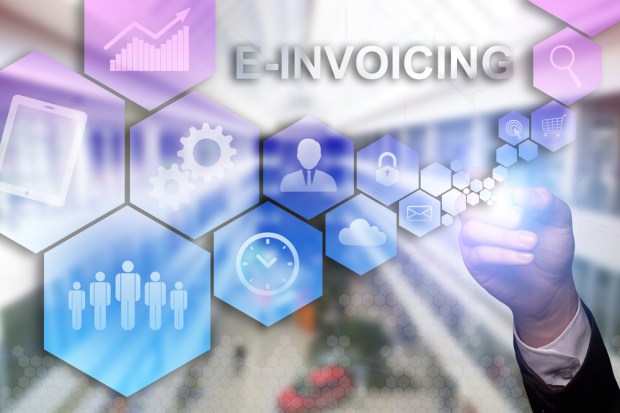The Oddity Of US Businesses That Still Use Paper Invoices

The U.S. seems to have a paper problem. In B2B transactions, paper checks and paper invoices continue to dominate, leading to friction in invoice processing, data management and payments.
The problem seems even more stark when compared against other jurisdictions across the world. Europe is among the leaders of eInvoice adoption, and while it’s largely a result of regulatory mandates, David Cocks, CEO of eInvoice processing company CloudTrade, said it’s also an effect of a cultural difference in which it is understood that paper simply doesn’t have a place in conducting business.
“It’s odd to us, but the U.S. is behind in thinking that it’s acceptable” to use paper invoices, he recently told PYMNTS. “Increasingly, in other countries in which we work, there is an absolute acceptance that sending bits of paper in the post is not the way to do business.”
It’s possible, he added, that the U.S.’ continuing use of paper invoices may be part of its ongoing connection to paper checks. In B2B payments, paper checks still make up about half of transactions according to 2016 data from the Association for Financial Professionals. But in his experience, Cocks said he’s actually seen no correlation between eInvoice adoption and a change in payment behavior.
“Check payment has all but disappeared in Europe. From an EU perspective, it’s almost a non-story now,” he said. “You will find very few people even willing to write you a check.”
There’s a similar mindset in EU companies’ unwillingness to send invoices through the mail too, he said.
Regulators have played a significant role in that regard, he said.
“In the public sector there is a creeping mandate — and in some countries there already is a mandate, as in France and Scandinavia,” he said. “If you’re going to do business with the government, you have to do an electronic invoice. They won’t accept paper invoices anymore, and obviously that’s a huge encouragement that enforces suppliers to accept that putting bits of paper in the post is no longer an acceptable thing to do in the year 2018.”
VAT and other tax rules have been instrumental in this trend too, said Cocks. As eInvoicing software adoption continues to grow, some markets, like in the U.K., have made it a bit easier to make the switch as officials start accepting PDFs as eInvoices too.
“There has been some misinformation that PDFs weren’t acceptable to tax authorities,” the executive explained. “This is particularly true where you have VAT tax, in which the supplier is collecting tax on behalf of the tax authorities. They have become sensitive to the traceability of those documents.”
“But in discussions with the tax authorities that we’ve had, they actually prefer PDFs to eInvoices, because the tax man himself can read and verify them,” he added.
There are other ways, however, that the shift to eInvoicing can create some confusion. One of the largest, said Cocks, stems from companies’ requirement to key in invoice data into some type of online portal, a process he noted can act as a barrier to eInvoice adoption in several ways.
“When companies ask suppliers to log in to a portal and key in their invoices, that can cause all sorts of issues,” he stated. “First of all, it’s a pain in the neck. And you end up worrying about what the legal invoice is: Is the representation that you keyed in the same as what you have in your finance systems? Plus, you have all sorts of opportunities for inaccuracies to creep in.”
In this regard, corporate buyers themselves play a significant role in eInvoice adoption among suppliers. Making it easier for businesses to process invoices, regardless of how or where they’re sent, means vendors may be more able to implement the eInvoice technology that works best for them.
“In my experience, what’s holding up adoption [of eInvoicing] is the receiving parties,” said Cocks. “They are very rigid in what they will receive, and they have all sorts of other barriers that are very high for their suppliers to overcome and send in those documents.”
CloudTrade addresses this point of friction by making it easier for companies to accept and process invoices received in a variety of formats. Earlier this month, the company announced it had expanded invoice processing capabilities, enabling firms to process any invoice that can be read by a human through its Cloud Capture solution.
For suppliers, the ability to accept an electronic invoice means greater assurance that the bill is going to get to where it needs to go.
“It’s certainty and speed of delivery,” said Cocks. “That’s key to suppliers, to have the traceability that the document has arrived. The alternative is you stick it in an envelope with a stamp and you just hope.”
But the benefits to the buyers can be even more far-reaching. As more companies continue to integrate automated solutions, eInvoicing makes it easier for buyers to capture and organize data from their invoices, match them against purchase orders and quickly process and invoice to potentially capture an early payment discount, explained Cocks.
Ongoing use of automated technologies also means that eInvoices can be instrumental in more strategic areas of the enterprise, including cash management, budgets and overall growth objectives.
“There is much greater demand for eInvoice receivers to have more comprehensive data off of their invoices,” added Cocks. “They use data off invoices to drive their business, to manage information, to understand where their spend is going. Purchase orders give you an intent to purchase; they don’t tell you what you actually bought.”
